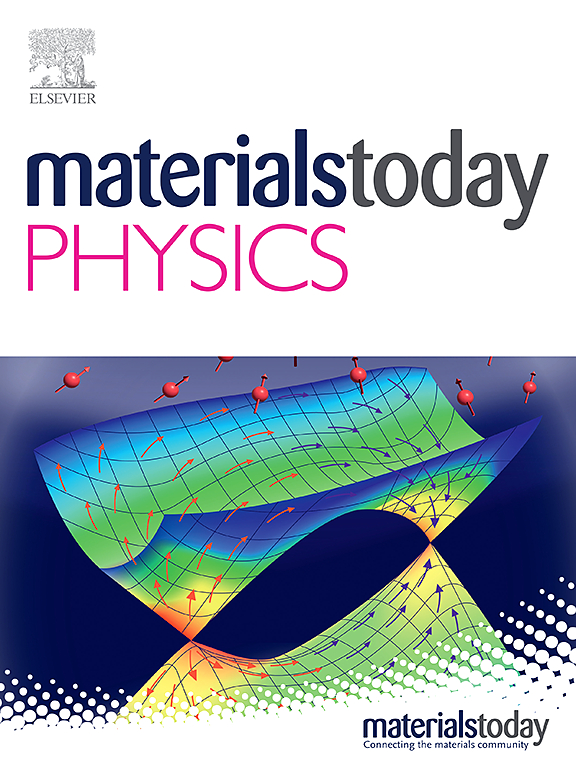Prediction of high-Tc phonon-mediated superconductivity with strong Ising spin-orbit coupling in monolayer WNO
IF 10
2区 材料科学
Q1 MATERIALS SCIENCE, MULTIDISCIPLINARY
引用次数: 0
Abstract
The Ising superconductor, due to its unique upper critical magnetic field, has become one of the most prominent subjects in the field of two-dimensional materials in recent years. Currently, the researches on Type I Ising superconductors mainly focus on transition metal chalcogenides (TMDs), however, the limited superconducting transition temperature (Tc) restricts their practical application. In addition to TMDs, Janus materials with central inversion symmetry breaking are also promising candidates for possessing strong Ising spin orbital couple (SOC). Here, through high-throughput calculations of T-phase and H-phase Janus materials transition metal nitrogen oxides (TMNOs), we obtain a potential high-Tc superconductor H-WNO. By solving the anisotropic Eliasberg equation, its Tc is predicted to be 46 K with strong electron phonon coupling of 1.71. Further calculations show that its Ising SOC is much stronger than Rashba SOC, and its average spin-orbit splitting energy at the Fermi level is comparable to that of the well-known Ising superconductor NbSe2, indicating that WNO is a potential excellent Ising superconductor. This is the first time that a Janus superconductor with high-Tc and strong Ising SOC was predicted. Our work opens up a new field to searching for high-Tc Ising superconductors.
单层WNO中强Ising自旋轨道耦合的高tc声子介导超导性的预测
伊辛超导体以其独特的上临界磁场,成为近年来二维材料领域研究的热点之一。目前,I型Ising超导体的研究主要集中在过渡金属硫族化物(TMDs)上,但有限的超导转变温度(Tc)限制了其实际应用。除了tmd外,具有中心反转对称破缺的Janus材料也是处理强Ising自旋轨道对(SOC)的有希望的候选材料。本文通过对t相和h相Janus材料过渡金属氮氧化物(TMNOs)的高通量计算,得到了一种潜在的高tc超导体H-WNO。通过求解各向异性Eliasberg方程,预测其Tc为46 K,电子声子耦合强度为1.71。进一步计算表明,WNO的Ising SOC比Rashba SOC强得多,其在费米能级上的平均自旋轨道分裂能与著名的Ising超导体NbSe2相当,表明WNO是一种潜在的优秀的Ising超导体。这是首次预测出具有高tc和强Ising SOC的Janus超导体。我们的工作为寻找高温超导体开辟了一个新的领域。
本文章由计算机程序翻译,如有差异,请以英文原文为准。
求助全文
约1分钟内获得全文
求助全文
来源期刊

Materials Today Physics
Materials Science-General Materials Science
CiteScore
14.00
自引率
7.80%
发文量
284
审稿时长
15 days
期刊介绍:
Materials Today Physics is a multi-disciplinary journal focused on the physics of materials, encompassing both the physical properties and materials synthesis. Operating at the interface of physics and materials science, this journal covers one of the largest and most dynamic fields within physical science. The forefront research in materials physics is driving advancements in new materials, uncovering new physics, and fostering novel applications at an unprecedented pace.
 求助内容:
求助内容: 应助结果提醒方式:
应助结果提醒方式:


